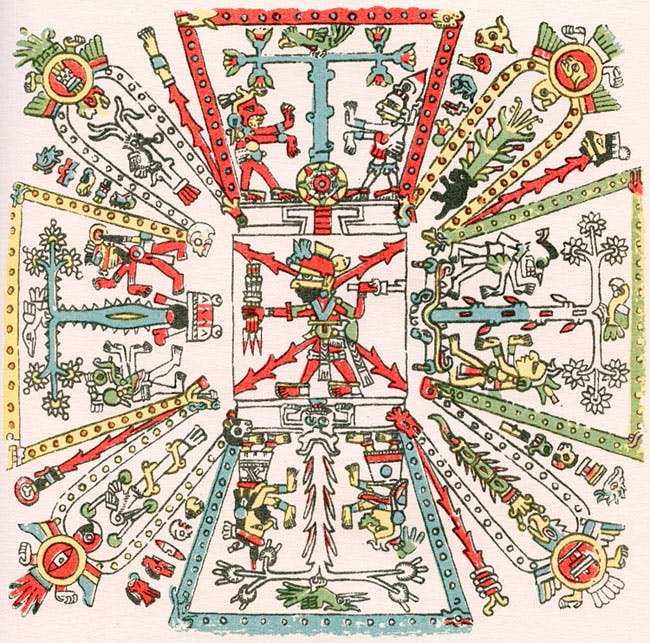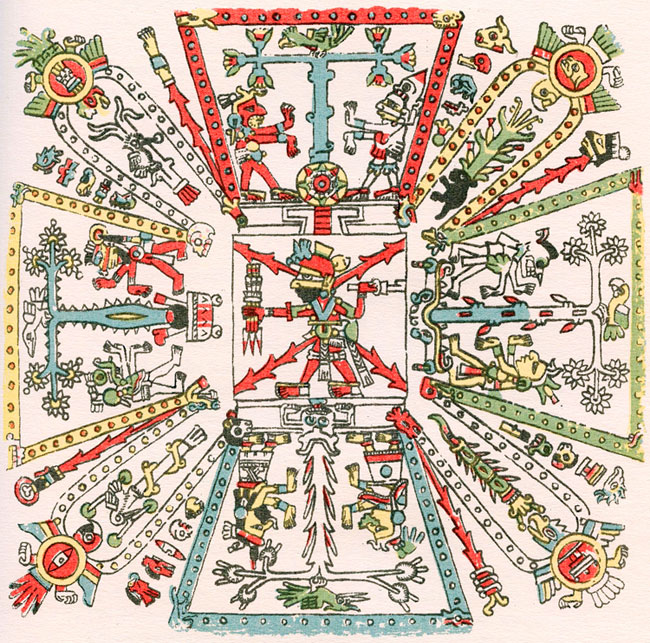Stardust, Big Visions and Atomic Connections
Jan 21, 2015
Story


“The atoms that make up the human body are...made of carbon, nitrogen, oxygen, all the fundamental ingredients of life itself....so that when I look up at the night sky and I know that we are part of this universe, the universe is in us. Many people feel small because the universe is so big. But I feel big, because my atoms came from those stars—there’s a level of connectivity. That’s really what you want in life, you want to feel connected. You want to feel relevant. You want to feel like you’re a participant in the going-ons of activities and events around you.”—Neil de Grasse Tyson
Its clean lines and cubed, organized forms steal my attention and I squint hard, my retinas scanning its private life, the riddle of the universe visibly hidden in front of me.
It stares back at me. Red, green, yellow, and blue laser-like streaks bend and arch into boxes protecting a demi-God figure inside a tight, clean frame. The demi-God’s eyes are steady, its arms commanding. Inside the coloured borders, birds sit atop the cruxes of imperious trees, the trees guarded by humans and mystical creatures. I pull my head back, blink, squint more, scrunching my face.
This is harder than Where’s Waldo?
But then, a break. My face untangles and I release a deep long breath.
The Fejervary-Mayer Codex from the ancient Aztec Empire finally reveals its secret vision, reflective of the one I hold for myself, my community and for the world.
With the masterful stroke of an artist and the algorithm of a calendar, the Fejervary-Mayer Codex is a cosmogram that elucidates the Aztecs relationship to space and time, but more than a keeper of time, the codex is a philosophical manifesto about the universe, human relationships, and the dialectic between humans and nature. The demi-God takes centre-stage, but is not self-centred. Surrounded by flora, fauna, and his fellow people pledged to protect him, and he protects them, evoking the idealized symmetry between humans and nature. Central to the cosmogram is the universal cardinal directions looping from West to East, North to South, a testament that no matter what country, what continent, what time zone we’re in, we use the same cardinal pulse points to spearhead movements—and to navigate us back to our homes we cannot walk away from.
The universality of cardinal directions is a metaphor of my vision for all participating leaders of social transformation movements. In our dog-eat-dog world where being the top Diva is paramount, where competition is valued over compassion, and the pressure to keep up with the Jones’ is no longer enough—it’s a knock ‘em dead, bare-knuckle, battle-royale to keep the Jones’ out of the way. Permanently.
Not that I am against individuality and self-expression. Far from it, as I believe that the commitment to make society a better one spins the creativity out of you, making you stand out from a crowd too eager to homogenize, too fearful to rock or row the fleet of boats—despite the breaking Franken-waves rolling towards the shore.
Too often, our narcissistic culture by way of "instagramming selfies", of wanting and needing to be that incomparable starlet too blazingly cool to be a member of a catalogue of stars within our grand solar system, is trickled down and integrated into progressive movements that ultimately ruin morale and fracture sisterhoods.
Throw me in that catalogue and let me shine among them stars, I say.
A conscientious decision to reverse individualistic pressures is crucial towards creating new social values to coincide a new society. By choosing to genuinely be a part of something bigger than yourself, rather than trying to be bigger then everything and anyone else, necessarily propels you to the axis of the action, making you a vital element in the ever-unfolding narrative that is humanity.
Because in the end, to quote Astrophysicist Neil de Grasse Tyson, we are all stardust; the exploding dust of luminous spheres creates gas clouds that form the next generation of solar systems.
It’s all about connecting the atoms to make atomic connections.




